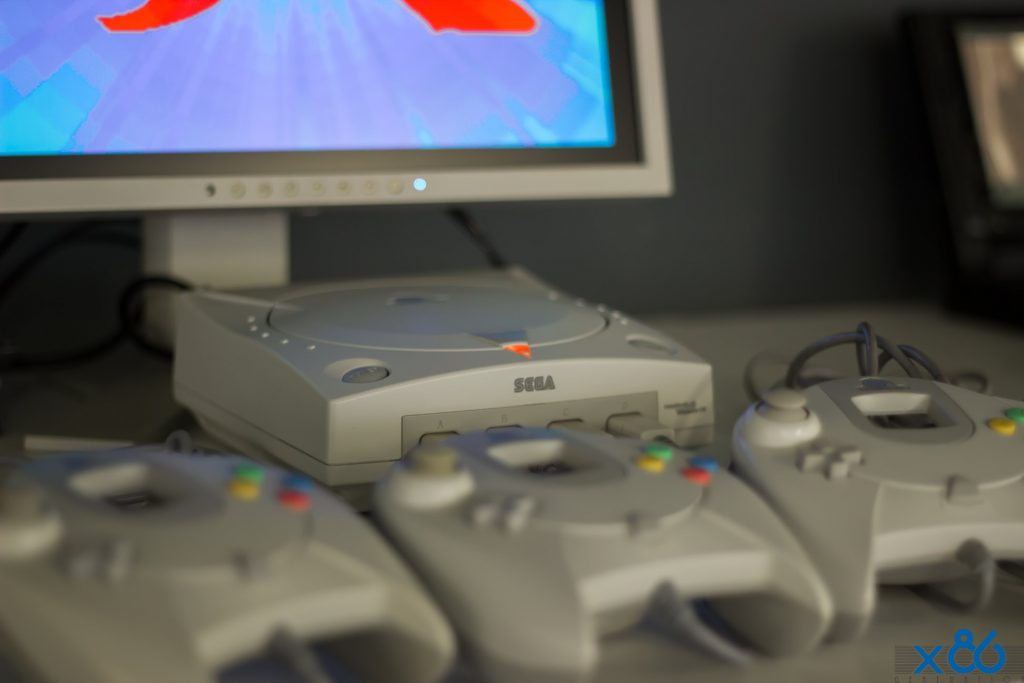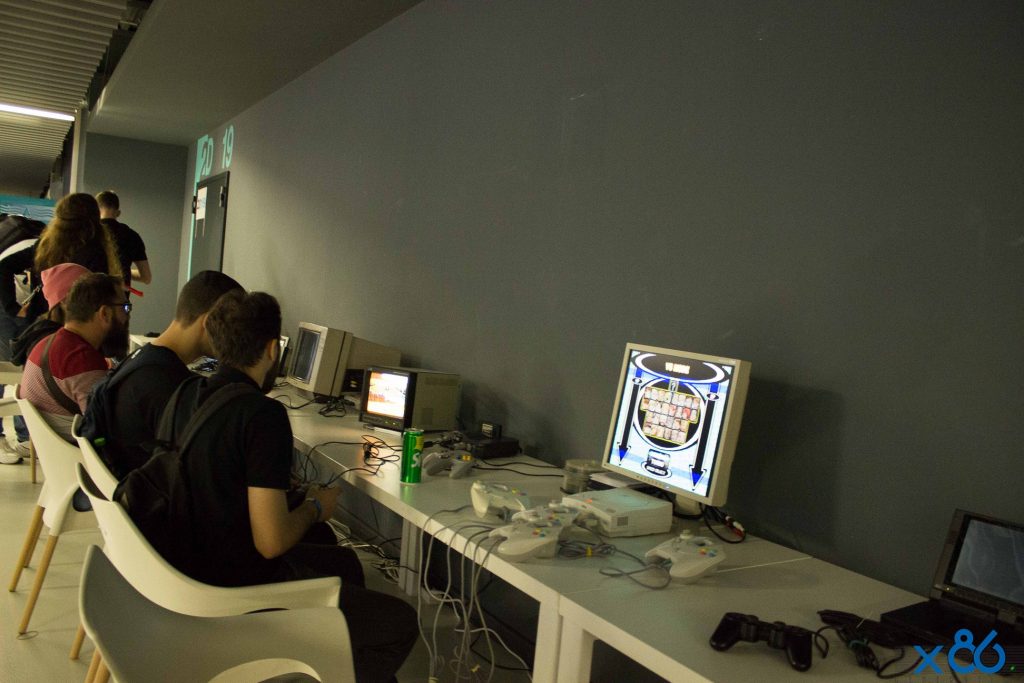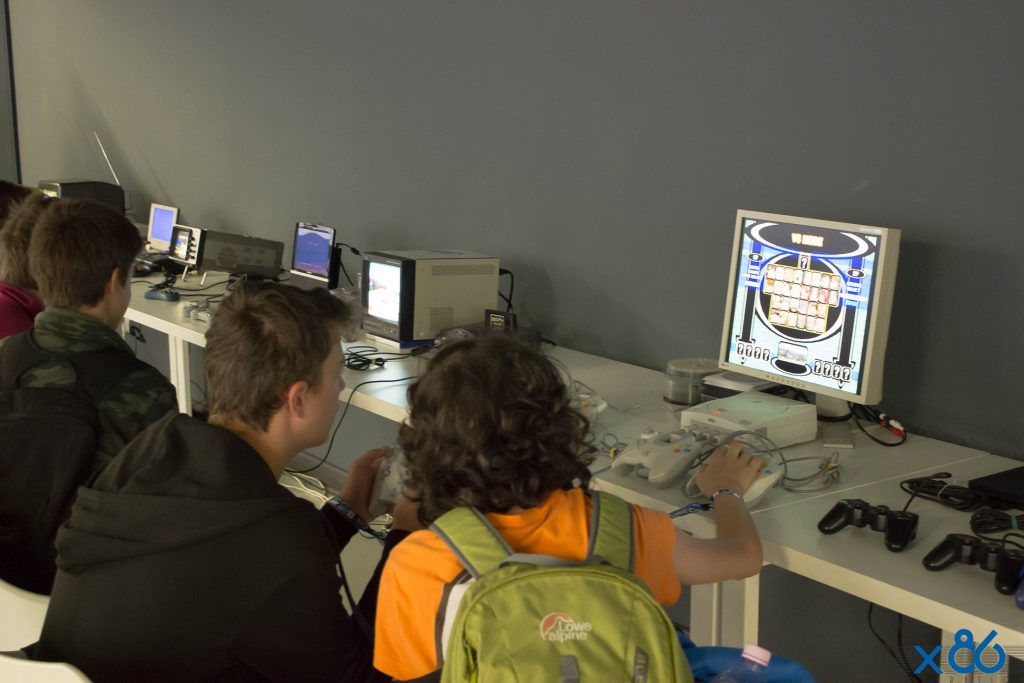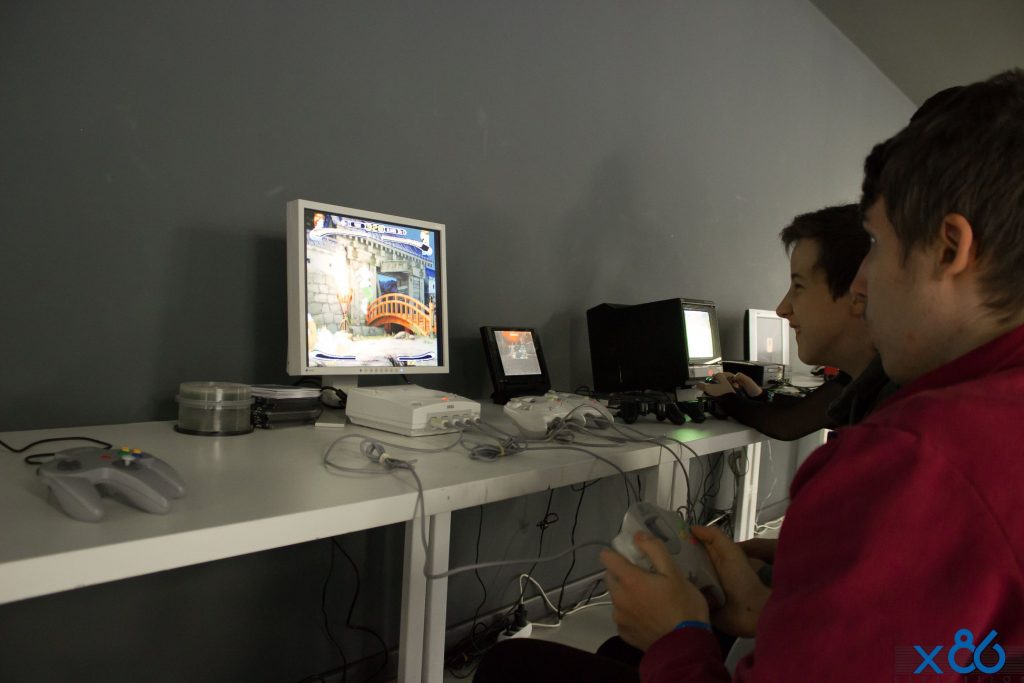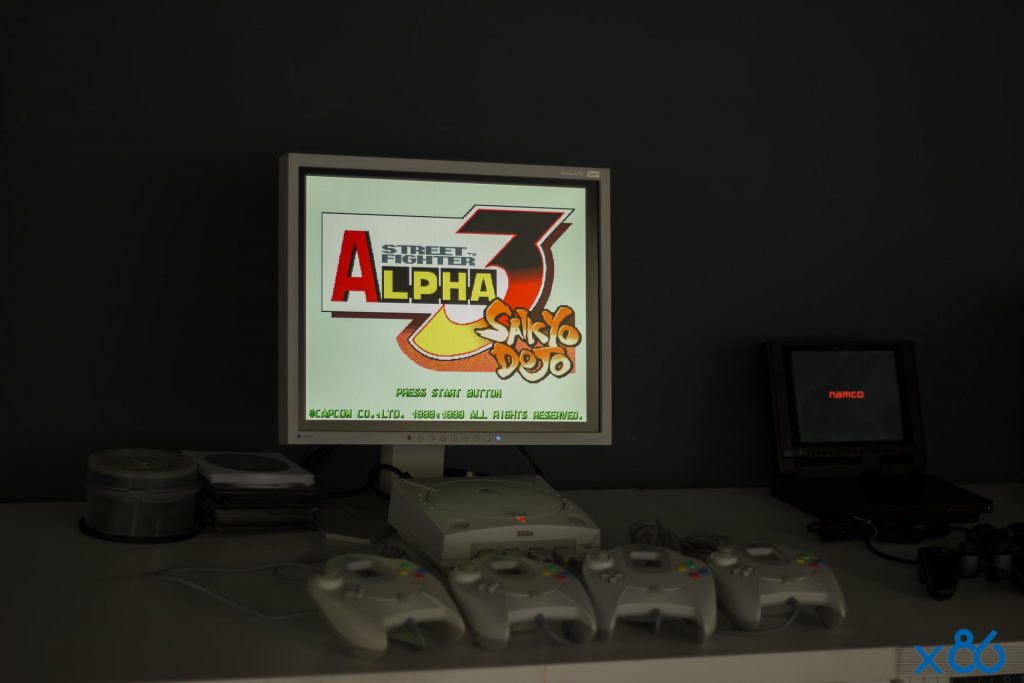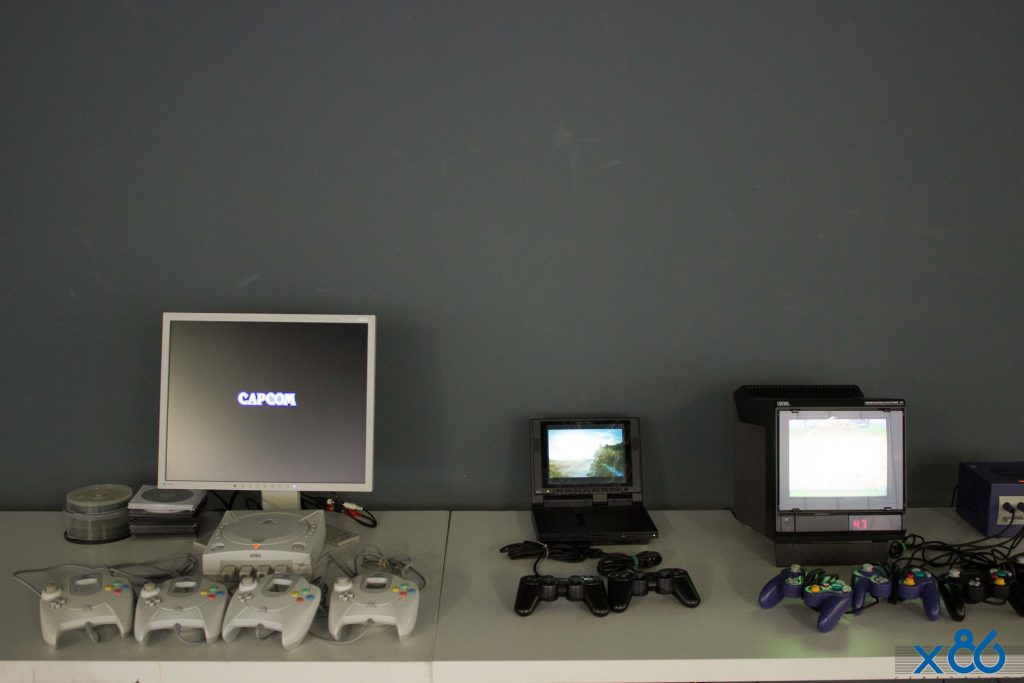YEAR: 1998
Initial Price: $199
The Dreamcast is a home video game console released by Sega on November 27, 1998 in Japan, September 9, 1999 in North America, and October 14, 1999 in Europe. It was the first in the sixth generation of video game consoles, preceding Sony’s PlayStation 2, Nintendo’s GameCube and Microsoft’s Xbox. The Dreamcast was Sega’s final home console, marking the end of the company’s 18 years in the console market.
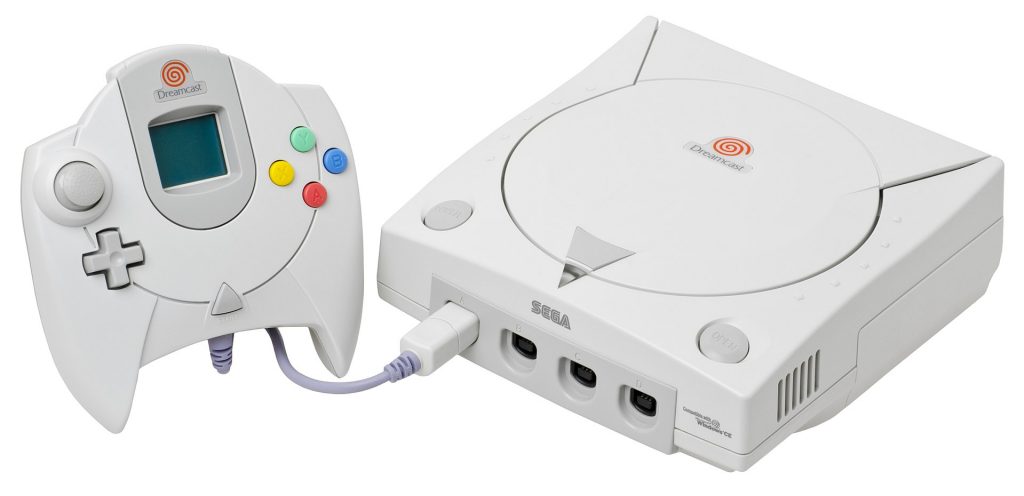
Although the Dreamcast had a short lifespan and limited third-party support, reviewers have considered the console ahead of its time. Its library contains many games considered creative and innovative, including Crazy Taxi, Jet Set Radio and Shenmue, as well as high-quality ports from Sega’s NAOMI arcade system board. The Dreamcast was also the first console to include a built-in modem for Internet support and online play.
Source: Wikipedia
Gallery from Transylvania Comic Con 2019
The last piece of SEGA`s hardware, blessed with awesome games…
The Dreamcast was Sega’s final throw of the hardware dice and the reasons for its failure were many. A lack of third party support didn’t help, and the company’s over-reliance on arcade conversions also put off those who had grown up with the deeper, more involving games of the PlayStation and N64 era. Poor support of online services was another black mark, as was the lack of a DVD drive – something that the PlayStation 2 boasted, and helped Sony’s machine get under millions of TV sets the world over. The combination of all these factors certainly pulled the console down, but like the Wii U, that’s not to say that the system was a complete failure.
Despite all of this, the Dreamcast managed to provide us with some truly excellent games during its relatively short tenure, some even considered by many to be definitive versions. Some of these titles were Dreamcast exclusives, whilst others were superb ports of games also found on other platforms.
Ikaruga

Ikaruga often finds itself in top games lists, and for good reason; it’s one of the best shooters ever made. Simple.
Created by the legendary Treasure, Ikaruga was, on the face of it anyway, a pretty standard shooter. However, the simple, but highly effective twist of using a black and white colour system for enemy projectiles elevated it above most of its compatriots.
In the game, you were able to switch your ship’s polarity from white to black and back again at will, with each colour absorbing enemy projectiles of the same hue. And, with the screen rapidly filling up with bullets of both colours this was a skill you needed to master quickly. Deviously tricky, whilst being as simple a mechanic as you can get, it worked brilliantly, and thrust the game to the top of many people’s favourite shooter lists.
Accompanied by a thumping soundtrack and some eye-scorching visuals, Ikaruga has been re-released several times, such is the demand for this shmup classic.
Crazy Taxi (1 & 2)

The odds were, if you liked checkpoint racing, drifting and The Offspring, you had Crazy Taxi. Sega’s take on the good ol’ cabbie certainly wasn’t intended to be a realistic affair, and was ridiculous, over the top action.
As one of several cab drivers your goal was to race around the city, picking up fares and dropping them off as quickly as possible before your time ran out. Various mini games were also included in the Crazy Box mode, such as a taxi ski jump and bowling, The second game added more complex maps, a jump ability and group fare pick ups, but remained pretty much identical to the original, which many still consider superior.
Crazy Taxi was the epitome of classic time, and score attack gaming. It was one of those games you kept coming back to just to see if you could do better, and the unlockables and mini games only served to add even more to the addictive gameplay.
If you enjoy online racing games, drifted.com has the right selection for you!
Resident Evil: Code Veronica

The Dreamcast may have only received lazy straight ports of the main Resident Evil series, but Capcom made up for this with the original release of Resident Evil: Code Veronica.
A first for the series, Code Veronica introduced 3D environments that, whilst they still featured fixed cameras, managed to push the series into the next generation, and it even featured an unlockable first person shooter mini game.
Sticking with the traditional Resident Evil gameplay, Code Veronica was a long, two-part story that saw players control both Claire and Chris Redfield as they once again struggled against the sinister Umbrella Corporation. This time the primary antagonists were the Ashfords, a downright freaky family that was pivotal in Umbrella’s creation and operations. Fan-favourite, Albert Wekser, also returned, and the game introduced some great new enemies, and saw the return of familiar foes, such as the highly-feared Hunters.
Although the core gamplay of the game played it pretty safe, this didn’t stop the game becoming one of the best classic Resident Evil outings.
Marvel Vs Capcom 2: New Age Of Heroes

Even though the series has now been updated on modern consoles, most die hard fans still consider Marvel Vs Capcom 2 to be the best of the series, and it’s almost universally considered to be one of the best 2D beat ’em ups ever created.
Throwing together the best of Capcom and Marvel’s stables, this was a true gamer and comic aficionado’s dream. Gorgeous visuals accompanied one of the best fighting systems ever created, and the sheer scale of some of the special moves in the game, not to mention the combo potential made for a truly spectacular scrapper, and one that’s still used in tournaments today.
Three-on-three combat was featured, and despite a mass of characters, most were very well balanced, and it took aeons for players to unlock everything in the game’s store, which included new characters, arenas, costumes and artwork.
Now released on many more platforms, including XBLA and PSN, this is considered by many to be the best traditional 2D fighter on the Dreamcast.
Phantasy Star Online

Even today, with consoles as powerful as the Xbox 360 and PlayStation 3, there have been very, very few MMORPGs outside of the PC world. However, the Dreamcast made one of the first attempts, and it was a real corker of a title.
Phantasy Star Online (PSO) took Sega’s long-running RPG series and turned it into an online multiplayer action role player, making the most of the console’s built-in modem. It wasn’t a full, open-world affair like WoW, instead being a four player instance based affair, but this didn’t hold the title back, and it quickly gathered a large, loyal fanbase.
As a ‘hunter’ your job was to leave the safe confines of your orbital colony ship and venture to the surface of planet Ragol, which was to be your new home. However, the planet was also home to a host of nasties, including the powerful Dark Falz. Spread across a handful of areas, the game was relatively short for an RPG, but this didn’t matter as replayability came in the form of questing with groups of friends, tackling harder and harder levels, and trading loot.
The real-time combat, addictive loot collecting and text chat system that automatically translated set phrases to other languages all helped create a unique online RPG that’s still going today in updated forms.
PSO V2.0 added new areas, items and character classes to the mix, as well as improvements to the game’s lobby systems, and even though more recent incarnations have added all sorts of technical enhancements, it’s the Dreamcast’s version that most fans fondly remember.
Soul Calibur
Although the Soul Calibur series had the most irritating announcer of any fighter, the weapon-based combat more than made up for it. Soul Calibur on the DC was not only one of the best fighters on the system (some would say the best), but is often cited as the best 3D scrapper ever created.
The combat system was wonderfully implemented, and catered for total newcomers and seasoned veterans alike. It was easy to pick up, and very hard to put down, and it also packed in a collection of game modes, including an expansive quest mode, and a ton of special content.
It wouldn’t be a total exaggeration to call Soul Calibur a perfect fighting game, and even the later entries in the series have never really recaptured the overall quality and appeal of this incarnation.
Sonic Adventure 2

It’s a widely held belief that Sega pretty much killed off its mascot when it made the jump to 3D, and it has to be said that many of the 3D Sonic games are pretty terrible. However, Sonic Adventure on the Dreamcast was an exception to that rule.
The first Sonic Adventure may have been a little rough around the edges, but the second game managed to refine the formula greatly. It featured multiple characters, various game styles and some impressive presentation. It was a slick, 3D affair that was one of the few such Sonic games to recapture the feel of the originals whilst injecting something new.
The pseudo-adventure elements of the first game were stripped out, leaving, for the better, a much more traditional action-oriented game. It also made much better use of the DC’s VM units thanks to the improved Chao garden.
It wasn’t a perfect game, but it’s one of the last, great Sonic games released, and to some, the only 3D outing worth playing.
Skies Of Arcadia

Some call this the best Final Fantasy clone ever made, and others would argue it’s even better than Square’s RPG series. Regardless of your view, what can’t be argued is that Skies Of Arcadia is one of the best examples of a turn-based RPG, period.
The story of Blue Rogue air pirate, Vyse and his friends is a sublime RPG masterpiece that contains a huge world, loveable characters and plenty of secrets to discover. Add on to that the ship-to-ship battles and innovative VM minigame and you had an epic adventure that simply wouldn’t let you go.
